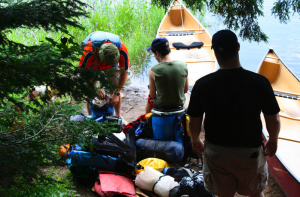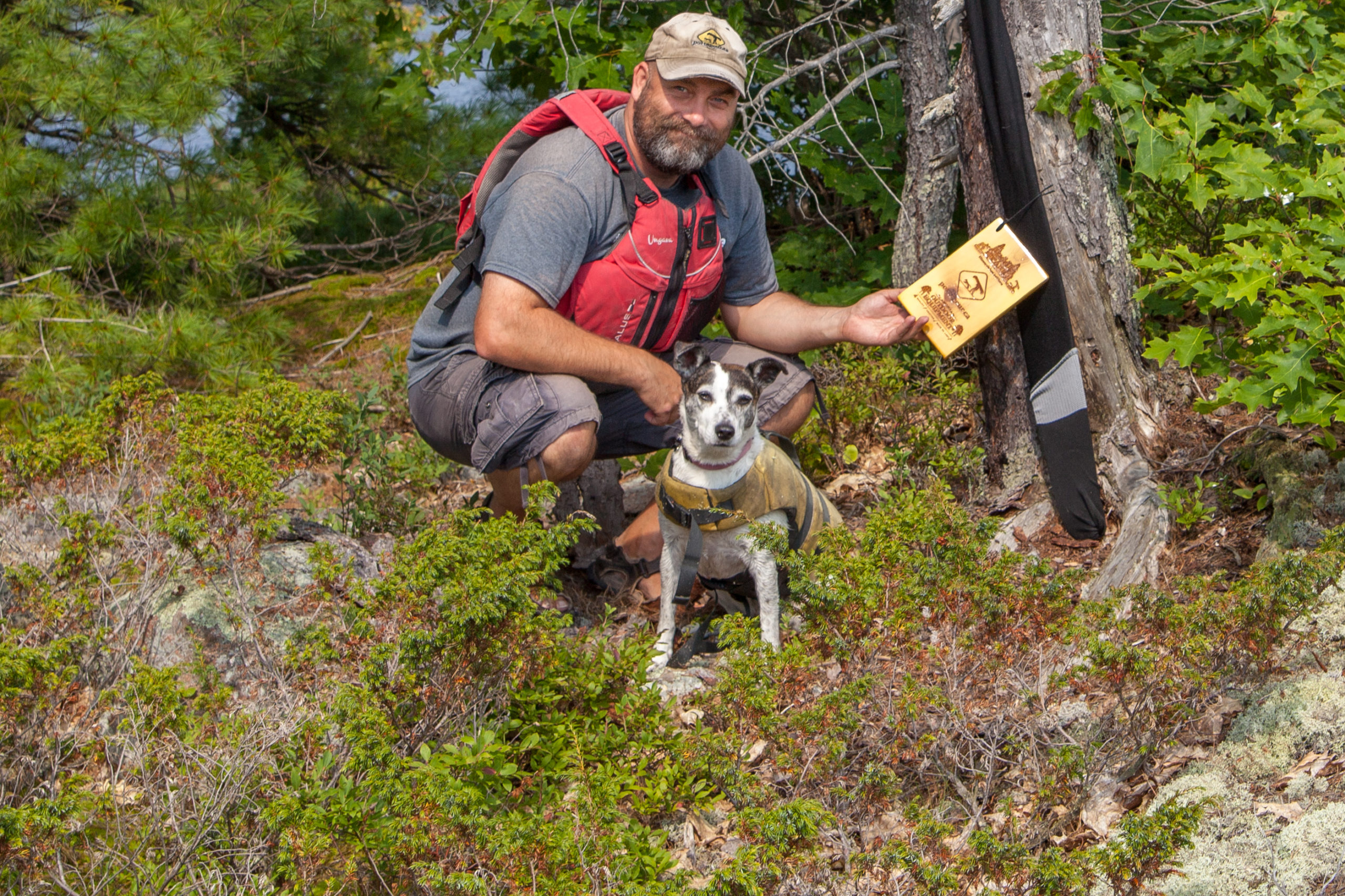Wandering Around Out There With A Canoe On My Head
Wandering Around Out There With A Canoe On My Head
 This step may seem like the most simple, but often becomes the most complicated. If I’m planning on going to the north of Algonquin coming from Southern Ontario, it’ll take me around 5 hours to get to the local outfitters to pick up canoes and other gear. That means that even if I’m a morning person and on the road at 5:00 AM (ugh!), I won’t be at the outfitters until 10:00 AM. At best, it’ll take a half hour to pay for my gear, have them find it, get it on my car and it’s now 10:30. The put in is 45 minutes south of the outfitters, and there’s no shuttle necessary for this trip, but now it’s suddenly 11:15.
This step may seem like the most simple, but often becomes the most complicated. If I’m planning on going to the north of Algonquin coming from Southern Ontario, it’ll take me around 5 hours to get to the local outfitters to pick up canoes and other gear. That means that even if I’m a morning person and on the road at 5:00 AM (ugh!), I won’t be at the outfitters until 10:00 AM. At best, it’ll take a half hour to pay for my gear, have them find it, get it on my car and it’s now 10:30. The put in is 45 minutes south of the outfitters, and there’s no shuttle necessary for this trip, but now it’s suddenly 11:15.
Anyone who gets up at 5:00 with packed meals to eat in the car will certainly only take a another half hour to park the car, organize the gear into the canoe, take a last pee break (I did spend all that time in the car without breaks) and get out on the lake. I also would probably have booked my trip in the least popular time of year so won’t have to be slowed by waiting for other groups, so I’m starting out by 12:45 PM – eating lunch in the canoe as I paddle. This best case scenario (read: unrealistic) has me ready for my route with half of the first day already done. I hope I didn’t plan a whole day’s paddle on day 1, or I’ll be racing to make sure I’m not pitching my tent in the dark – that is if I don’t get slowed down by weather or wildlife or the general unforeseen. Sounds like a great start.
Things that can cause you to lose time:
Time-saver #1: Eliminate some of the little issues
Pack a breakfast for the first day. Have half the group shuttle the cars and the other half get and organize the gear. Or, you can alter your allotted time. Again, you’re on vacation. Expand the time for an extra day before and after to take care of the travel and stay overnight at a campground close to the outfitters. Now you just need to grab the gear and get to the put in. Often outfitters have lodges or campgrounds on site that you can book at the same time as your gear. If not, where there’s a lake, there’s usually a campground nearby.
Time-saver #2: Shorten the route itself
 If you can do it, you can adjust the route to shorten the first day to accommodate travel, then spend the last day driving home after getting off the lake. I’m not a big fan of this option, but some people like it. You’re tired from a whole day of travel only to get into the car and try and stay awake during the drive home. If you can do it, stay one more night. If you can splurge, it’s really nice to stay at a motel that night to shower, have a big meal and sleep on a comfortable bed. (Even a campground can seem like a luxurious dream after being in the bush for a week.) If that won’t work, you’re looking at shortening the route for the last day as well. It is important to know what time the outfitter expects their gear and canoes back. Sometimes you can leave it after hours (usually for a small late fee), but more often than not, you’ll be charged an extra day. Also, if they’re particular about the condition of their canoes, you’re not going to be there when they decide if the canoe needs to be repaired – at your cost.
If you can do it, you can adjust the route to shorten the first day to accommodate travel, then spend the last day driving home after getting off the lake. I’m not a big fan of this option, but some people like it. You’re tired from a whole day of travel only to get into the car and try and stay awake during the drive home. If you can do it, stay one more night. If you can splurge, it’s really nice to stay at a motel that night to shower, have a big meal and sleep on a comfortable bed. (Even a campground can seem like a luxurious dream after being in the bush for a week.) If that won’t work, you’re looking at shortening the route for the last day as well. It is important to know what time the outfitter expects their gear and canoes back. Sometimes you can leave it after hours (usually for a small late fee), but more often than not, you’ll be charged an extra day. Also, if they’re particular about the condition of their canoes, you’re not going to be there when they decide if the canoe needs to be repaired – at your cost.
In my experience…
What I like to do is have a short last day to accommodate traveling back home. This works out well because no matter how long your trip is, you’re the most tired on the last day. In order to be on the lake as soon as possible, I will pack the car two days before the trip starts, go to work and head straight up to a campground the night before. I find it convenient because it’s using up the time I’d normally be pacing around waiting to try and sleep so I can get an early start. If you have a nice boss, you might even be able to negotiate a way to leave early. Tip: If you’re going to Algonquin, the Tea Lake campground gate does not close. You can make your reservations and pay on-line, so you can show up as late as you like and leave whenever you like in the morning Try to be courteous though. Watch the noise and your headlights when you’re entering. Anywhere else, you should ask the campground how late you can show up and whether you can pay in advance.
As far as getting your gear goes, I’ve found that there’s no hurrying up an outfitter. Sometimes it’s just simply the slower pace of rural areas, or the slower pace of teenagers in charge of the gear, or the group of 20 who both got there just before you did, and aren’t in any particular hurry. There are exceptions. Some places have a bee hive staff that get you in and out before you know what happened. As an alternative to shuttling and/or going out of your way to pick up gear at the outfitters, you can often have your gear and equipment dropped off at the put in and even picked up at the take out. This option does require you to be where and when they expect you to be there.
If you’ve gotten this far and your route is a little tight, go back and see if you can make some adjustments. Remember, you’re on vacation. Give yourself plenty of time, especially on the first day, so you don’t have to stress yourself the whole trip trying to keep your schedule.

Session expired
Please log in again. The login page will open in a new tab. After logging in you can close it and return to this page.